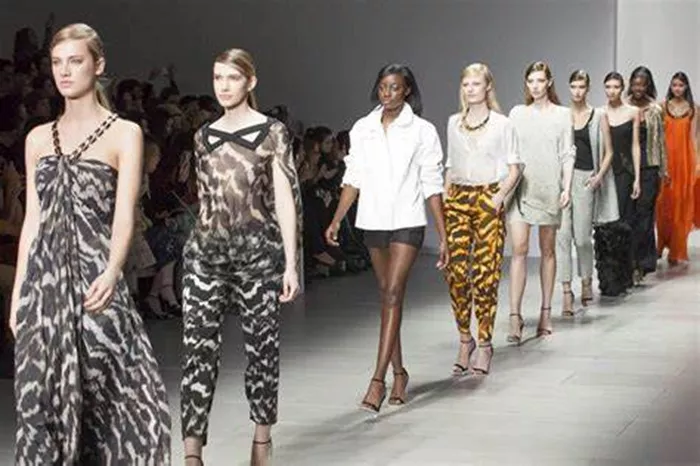Designing a fashion show is an art form that blends creativity, organization, and showmanship. From selecting a theme to coordinating logistics, every detail contributes to the event’s success. This guide will take you through the essential steps to design a captivating and professional fashion show, ensuring it leaves a lasting impression on your audience.
1. Establish the Purpose and Theme
Define the Purpose
Understanding the purpose of your fashion show is crucial. Are you launching a new collection, promoting a brand, or supporting a cause? Clarifying the objective will guide all other aspects of the show.
Choose a Theme
A cohesive theme ties the entire show together. It should reflect the collection’s essence and resonate with the target audience. Consider seasonal trends, cultural elements, or unique concepts that inspire and excite.
2. Create a Detailed Plan
Develop a Concept
Once the theme is chosen, develop a concept that will bring it to life. This includes the overall aesthetic, mood, and style of the show. Visualize the runway, backdrop, lighting, and music that will complement the theme.
Set a Budget
Budgeting is a critical component. Outline all potential expenses, including venue, models, clothing, makeup, hairstyling, lighting, sound, marketing, and staff. Allocate funds appropriately to ensure no aspect is overlooked.
Select a Venue
The venue sets the stage for your show. It should align with the theme and accommodate the expected audience size. Consider unconventional locations like art galleries, warehouses, or outdoor spaces to create a memorable experience.
3. Assemble a Talented Team
Hire a Creative Director
A creative director oversees the show’s artistic vision, ensuring all elements align with the theme and purpose. They collaborate with designers, stylists, and other key personnel to maintain a cohesive look.
Recruit Models
Select models who embody the collection’s style and energy. Consider diversity in body types, ethnicities, and gender to reflect inclusivity. Conduct casting calls or work with reputable agencies to find the right talent.
Engage Stylists and Makeup Artists
Experienced stylists and makeup artists are essential. They enhance the models’ appearance, ensuring the clothing is showcased beautifully. Collaborate with professionals who understand the theme and can execute the desired look.
4. Design the Runway and Set
Plan the Runway Layout
The runway is the focal point of the show. Design a layout that maximizes visibility for the audience and photographers. Consider traditional straight runways, U-shaped paths, or more intricate designs that complement the theme.
Create a Stunning Backdrop
A visually appealing backdrop enhances the overall ambiance. It can range from simple, elegant designs to elaborate installations. Ensure the backdrop does not overshadow the clothing but instead complements it.
Lighting and Sound
Lighting sets the mood and highlights the garments. Work with lighting designers to create dynamic effects that enhance the show’s drama. Coordinate with sound technicians to ensure the music complements the theme and transitions smoothly.
5. Coordinate the Logistics
Schedule Rehearsals
Rehearsals are crucial for a smooth performance. Schedule multiple rehearsals to ensure everyone knows their roles and timings. Practice different scenarios to prepare for any unforeseen issues.
Organize the Wardrobe
Ensure all garments are organized and ready for the show. Assign dressers to each model to facilitate quick changes. Have a plan for any last-minute alterations or repairs.
Manage Backstage Operations
Backstage can be chaotic. Assign a backstage manager to oversee the operations. Ensure there are clear areas for dressing, hair and makeup, and model lineup. Maintain communication between backstage and front-of-house teams.
6. Promote the Event
Create a Marketing Plan
Effective promotion is key to attracting an audience. Utilize social media, email marketing, press releases, and collaborations with influencers to generate buzz. Highlight the show’s unique aspects and any special guests or performances.
Design Invitations
Invitations set the tone for the event. Design them to reflect the theme and intrigue potential attendees. Send them out well in advance and include all necessary details such as date, time, venue, and dress code.
Engage with Media
Invite fashion bloggers, journalists, and photographers to cover the event. Provide them with press kits that include information about the collection, designers, and the theme. Arrange interviews and photo opportunities to maximize coverage.
See Also: How Smartphones Are Killing Off The Fashion Show
7. Execute the Show
Ensure Smooth Check-In
A seamless check-in process sets a positive tone. Use technology for quick registration and seating assignments. Have staff available to assist with any issues or questions.
Manage the Runway Show
The moment the show begins, everything should flow seamlessly. Coordinate with the creative director, lighting and sound technicians, and models to ensure flawless execution. Maintain a calm and organized backstage environment.
Engage the Audience
Captivating the audience is the ultimate goal. Use dynamic lighting, compelling music, and striking visuals to keep them engaged. Encourage interaction through live social media feeds or post-show Q&A sessions with designers.
8. Post-Show Activities
Collect Feedback
Feedback is invaluable for future improvements. Distribute surveys to attendees, models, and staff to gather insights on what worked well and what could be enhanced.
Follow Up with Media
Engage with media outlets post-show to ensure coverage. Share high-quality photos and videos, along with press releases highlighting key moments and designer statements.
Evaluate the Success
Analyze the event’s success based on attendance, media coverage, and feedback. Review the budget and identify areas for cost-saving or increased investment. Use these insights to plan even more successful future shows.
Conclusion
Designing a fashion show is a complex yet rewarding endeavor. By meticulously planning each aspect, from theme selection to post-show activities, you can create an unforgettable experience that showcases the collection’s beauty and the brand’s vision. Remember, the key to a successful fashion show lies in the seamless integration of creativity, organization, and execution.
Related topics:
- Fashion For Good Shifts Its Attention To Footwear, Partnering With Adidas And Others
- Prada Group Introduces Unique Fashion Training Program In Mexico
- Roberto Cavalli Will Be The Final Show At Dubai Fashion Week

